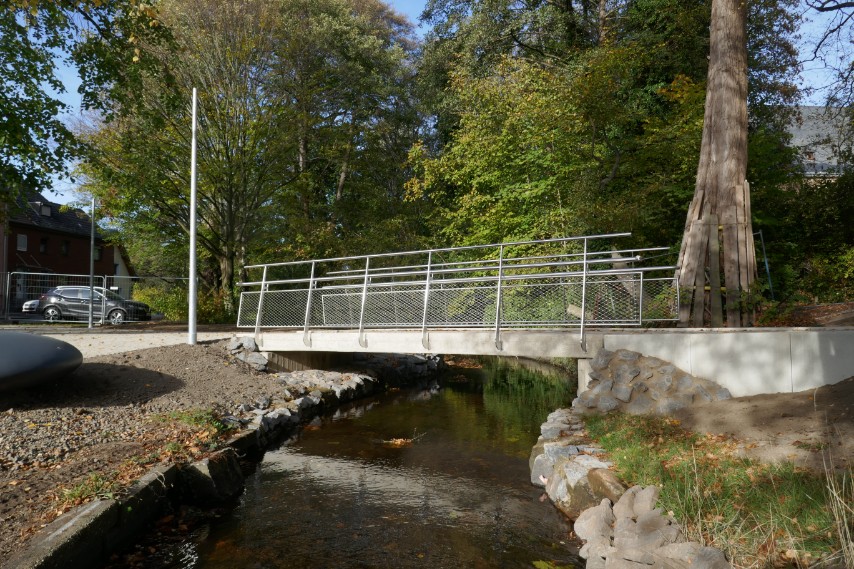Tags
Innovative Infrastructure for Tomorrow – Two Carbon Concrete Bridges in Kreuzau
In the town of Kreuzau two new pedestrian and bicycle bridges were constructed using carbon concrete – one of the most advanced building materials available today. This project combines cutting-edge technology with sustainable construction practices and serves as a nationwide pilot project for bridge construction using textile reinforcement.
The bridges not only connect the two banks of the Mühlenteich but also bridge tradition and innovation. They are part of the "RurUfer-Radweg" recreational corridor and stand as visible symbols of climate-conscious, resource-efficient public infrastructure.
Project Details
- General Contractor: Hans Graf Bauunternehmung GmbH & Co. KG
- Planning & Structural Engineering: Cornelissen + Partner Engineering Office
- Scientific Support: RWTH Aachen University (IMB)
Technical Details
Both bridges were constructed entirely from prefabricated carbon concrete components – a globally unique approach for public bridges of this type. The innovative VariBridge system was used, based on modular bridge elements that are produced off-site and assembled quickly on-site.
- Bridge Type: Single-span beam bridge
- Span per Bridge: Approx. 12 meters
- Usable Width: 3.00 meters
- Load Capacity: Up to 3.5 tons (light maintenance vehicles)
- Bearings: Elastomeric bearings
- Foundations: Shallow foundation, integrated with existing pathways
- Concrete: High-performance concrete with fine aggregate grading
- Reinforcement: Carbon reinforcement solidian GRID Q95-CCE-38
- Surface: Anti-slip mastic asphalt on waterproofing membrane
Key facts
| Application | Bridges |
| Products used | |
| Year | 2023 |
| Location | Kreuzau, Germany |
| Project | Freeform, doubly curved concrete facade that transitions from vertical wall into roof. |
Benefits
1. Durability and Corrosion Resistance
Carbon concrete is entirely resistant to environmental influences such as moisture or de-icing salts. This ensures an exceptional service life of over 100 years with minimal maintenance.
2. Resource Efficiency and Sustainability
Eliminating the need for thick concrete covers and using lightweight carbon reinforcement significantly reduces material consumption and the structure’s CO₂ footprint.
3. Slender Construction
The bridge elements feature a very low structural depth, offering aesthetic benefits while ensuring high load-bearing capacity and seamless integration into the surrounding landscape.
4. Fast Installation with Prefabricated Elements
The complete load-bearing structures were manufactured off-site and assembled on location in a matter of days.
Design and Architectural Considerations
The bridges were designed to integrate harmoniously into the natural environment around the Mühlenteich. Clean lines, a filigree silhouette and a slender underside create a modern, subtle appearance. The light concrete surface also improves visibility in poor lighting conditions – an added value in terms of safety and design. The new carbon concrete bridges in Kreuzau are a flagship example of future-oriented bridge construction. By combining industrial prefabrication, innovative materials and efficient construction techniques, the project sets new standards in public infrastructure.
Images: © Ingenieurbüro Cornelissen + Partner und USCHI KITSCHKE FOTOGRAFIE












